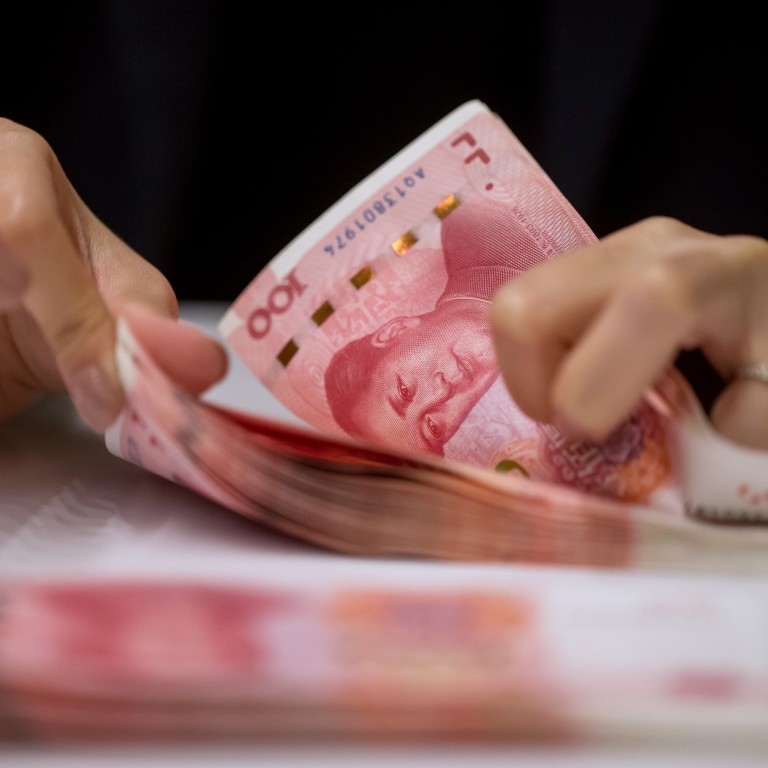
China kept on US currency manipulator watch list amid sharp fall in US dollar-yuan exchange rate
- The Trump administration has kept China on its watch list of countries that may be deliberately devaluing their currencies
- The US Department of the Treasury cited China’s high trade surplus with the US as the primary reason behind the designation
The US Department of the Treasury has kept China on its watch list for foreign-exchange manipulation in its final report before the Trump administration leaves office.
However, US authorities cited China’s high trade surplus with the US this year as the primary reason for its inclusion.
“The recent rise in China’s trade surplus is likely to continue weighing on global imbalances,” the US Treasury said in the report released on Wednesday. “As the global economic recovery path stabilises, it is critical to adopt policies that allow for a narrowing of both surplus and deficit imbalances.”
Trading partners must generally meet two of three criteria to be included on the watch list, but China met just one: a bilateral trade surplus with the US of at least US$20 billion.
Though China’s current account surplus was below 3 per cent of US gross domestic product, the US Treasury said its surplus was high in dollar terms at US$157 billion in the first half of 2020.
China recorded a trade surplus of US$287 billion in the first 11 months of the year, up from US$272 billion in the same period last year, according to Chinese customs data.
China manages trading of the yuan against the US dollar by setting a daily parity rate that forms the centre of the currency’s allowable range each day. The yuan is allowed to rise or fall 2 per cent above or below the parity rate.
The US Treasury highlighted that China provides limited transparency on key features of the exchange rate mechanism, including policy objectives; the relationship between the central bank and foreign exchange activities of state-owned banks; and its activities in the offshore yuan market.
It also does not publish foreign exchange intervention data, forcing US Treasury staff to estimate its scale.
Given China’s substantial trade and portfolio inflows in the second quarter of 2020, combined with the lack of substantial official foreign exchange reserve accumulation, the yuan’s relative stability over the period raised concern, the US Treasury said.
Moreover, Chinese state banks have been purchasing foreign exchange even though the People’s Bank of China (PBOC), the country’s central bank, appears to have refrained from direct intervention, the report said.
“Treasury will be monitoring closely foreign exchange intervention proxies and related data for signs of possible intervention by the PBOC or the state banks,” it said.
The US has labelled China a currency manipulator twice – in 1994 and last year. However, the Trump administration’s swift removal of the designation last year, just months after imposing it, suggested political motivation in the eyes of Beijing.
We think bigger consequences would emerge if the Commerce Department used currency undervaluation findings to initiate countervailing duties against industries benefiting from the undervaluation
The objective of designating some countries as manipulators is for the US to gain leverage in trade negotiations and opens the door for the US Department of Commerce to use countervailing duties, said Steve Englander, head of global G10 currency research and North America macro strategy at Standard Chartered Bank.
The department’s findings last November that manipulation of the yuan had given Chinese twist ties an unfair trade advantage could easily be applied to a broader range of industries, Englander said.
“We think bigger consequences would emerge if the Commerce Department used currency undervaluation findings to initiate countervailing duties against industries benefiting from the undervaluation,” Englander said.
The long-overdue report, which scrutinised the currency practices of 20 countries, designated Vietnam and Switzerland as currency manipulators for the first time.
Taiwan, Thailand and India are new additions to the watch list, while Ireland was removed.

